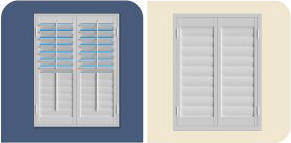How Window Shutters Help You Control Room Temperature
Closed shutters are the next best barrier against the extreme temperature and wind in Houston, coming right after windows. Other window treatments such as blinds, draperies, and shades block most of the temperature from the outdoors, but not all. And, where your window treatment’s quality means the difference between a cozy seat by the window and one that’s not, Polywood® shutters are the optimal choice.
Polywood shutters are built from a synthetic polymer that insulates up to 70% better than a comparable traditional wood shutter. As a matter of fact, the Polywood Shutter Insulating System blocks up to 30 degrees of airflow and lessens heat transfer by 45.96%. This results in energy savings for your house – and full room temperature control.
The heating and cooling system in your home takes less time to work since you’ve now reduced the impact from the outside weather. If you want to bring in some of the effects of the external elements, just slant the louvers open and adjust them the way you’d like. You can get even more window treatment temperature control by closing your shutters properly.
How to Close Your Shutters for Maximum Temperature Control
Two parts of your shutters should be closed to seal off external temperature: the panels and the louvers.
To properly close your Polywood shutter panels, swing them toward the window. As you move the panels into the shutter frame, check that the pieces of weatherstripping interlock along the vertical ends of your shutters.

To properly close your louvers, push the tilt rod toward the louvers, making sure the top of the tilt rod will fit into the "mouse hole," which is above the top louver. It is best to run your hand up the tilt rod, and push in as you go up. This is particularly true for taller shutters – sometimes a soft push at the bottom of the tilt rod isn't enough and doesn’t close gaps at the top.

By submitting, you authorize Sunburst Shutters to reach out via phone, email, or text. You may opt-out at any time. Message/data rates apply. Consent is not a condition of purchase. See our privacy policy for more information.


